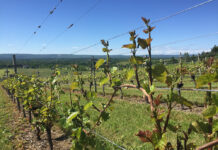
The winegrape harvest has been finished for a week when brothers Steve and Mike Sangiacomo meet in their Sonoma office to catch up on some overdue indoor business.
Outside, the vineyards are quiet, their leaves turning to shades of gold and burgundy. There’s a sense of relief in the air on this November morning, and it’s not coming only from the fields.
“It was a successful harvest that definitely tested the resiliency of us as growers,” said Steve. “It even tested the resiliency of the grapes themselves. It was one of our longest growing seasons since 2005.”
Multiple rain events and unusually cool temperatures threatened the crop early on. But things began turning around after heat spikes in September and October enhanced ripeness and bolstered grape quality.
“It’s shaping up to be an exceptional vintage,” Steve added.
That’s good news for the Sangiacomos and for the 90 wineries who source their grapes from this third-generation farming operation. For more than 50 years, Sangiacomo Family Vineyards has been growing premium Chardonnay and Pinot Noir grapes for winery partners. Today, the Sangiacomos farm 1,600 acres across 15 vineyards in the Carneros, Petaluma Gap, Sonoma Coast and Napa Valley regions. Their vineyard expertise in one of the world’s premier wine areas has earned them a long list of loyal customers and a litany of industry awards.
“To put it simply, they are one of the best growers of Chardonnay in the world and a pleasure to work with,” said Richie Allen, senior director of winemaking for Rombauer Vineyards in St. Helena, in nearby Napa Valley.
He’s not alone in his estimation of the Sangiacomo operation. In 2020, the Sonoma County Farm Bureau honored the family with the Luther Burbank Conservation Award for balancing economic viability with environmental stewardship. In 2019, the Sonoma County Harvest Fair presented the Sangiacomos with its Sustainable Farmers Award.
Most recently, the California Association of Winegrape Growers (CAWG) named Sangiacomo Family Vineyards its 2024 Grower of the Year. In announcing the award, CAWG paid tribute to the Sangiacomos’ “pioneering spirit, commitment to sustainable practices, innovation and community engagement.”
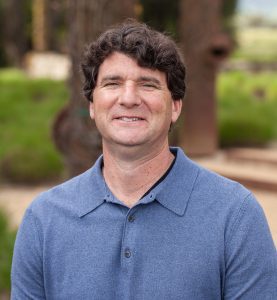
Family Roots
The Sangiacomos’ success didn’t happen overnight. The family has been farming in Sonoma County since 1927 when Italian-born Vittorio Sangiacomo purchased a 52-acre fruit-tree ranch just 2.5 miles from Sonoma’s historic city square. For years, the family grew pears on its home ranch.
Vittorio may not have been thinking of viticulture back then, but he had chosen land perfect for what his grandsons call “amazing vineyard sites.” In 1969, the Sangiacomos planted their first vineyard. By the 1980s, the conversion from orchards to vineyards was complete. Over time, the family expanded its acreage. Today, Vittorio’s grandchildren, Mike, Steve and their sister Mia Pucci, lead the operation, helped by other family members and 120 employees.

In 2016, the Sangiacomos took on winemaking, launching their own estate brand. The label bears the “Sangiacomo Wines” name on its bottles of Pinot Noir, Chardonnay and Cabernet. Five years later, they began offering wine tasting and vineyard tours on the home ranch, now part of the Carneros American Viticultural Area. A recent wine tasting on the “Home Ranch Terrace” featured the Sangiacomo 2021 Sonoma Coast Chardonnay, which earned a 93-point, or “excellent,” score and an Editors’ Choice recognition from Wine Enthusiast magazine.
Yet the addition of winemaking is only a small part of the family’s business, amounting to about 4,000 cases a year, or just 2% of the fruit they grow. The rest of their winegrapes are custom grown for wineries whose annual volumes range from a thousand to hundreds of thousands of cases. The Sangiacomos work collaboratively with their clients, discussing varietals, clones, farming practices and appellations. Together they then select a match from over 300 small vineyard blocks. The Sangiacomos’ pride in their winery partners shines in the foyer of their Sonoma office, where a wall lined with dozens of their customers’ wine bottles dominates the room.
Staying Ahead of Challenges
As custom farmers, it makes sense for the Sangiacomos to have a broad customer base to minimize their farming risks. And there are plenty of those.
“You can do everything right in the vineyard, but Mother Nature can come in and take your success away in one vintage,” said Mike.
Like other grape growers, the Sangiacomos wrestle with weather and climate change, emerging plant viruses, labor shortages, water uncertainty, increasing regulations, energy needs, rising input costs, shifting market conditions and the lingering impacts of the pandemic.
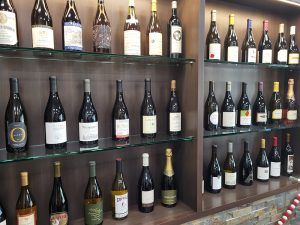
“In our dad’s, uncles’, aunts’ and grandparents’ age, it was really more about just producing the best quality product you could,” said Mike. “Today, the challenge is continuing to evolve and stay ahead of all the issues.”
Added Steve: “We feel the responsibility to deliver a premium product. If we do not, a lot of these wineries are not going to have wine to sell, which is going to affect their businesses along with ours. So, we’re going to do everything we can to achieve that.”
As a result, the Sangiacomos have made sustainable winegrape growing a priority. In 2015, all Sangiacomo vineyards received 100% sustainable certification from the California Sustainable Winegrowing Alliance. That year, too, the family’s vineyards were also certified under the Fish Friendly Farming program for land management practices that protect fish habitat. Among their vineyard sustainability practices, the Sangiacomos have adopted water conservation, soil management and erosion control (e.g., planting cover crops and riparian strips).
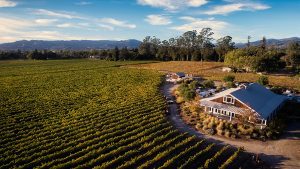
Increasingly, the Sangiacomos also are seeking ways to use less energy, and they’re going electric where they can. They’re already using electric pressure washers, for example, and next year, one of their vineyards will use an electric tractor for the first time. They also plan to expand the use of solar panels for additional electric power. They’re investing in mechanized weed management for vineyard floors and canopies.
But this farming family relies on other strengths too. The brothers cite the family’s longevity, consistency and work ethic, handed down from what Steve called “an amazing example” set by previous Sangiacomo generations. The business also cultivates “a trust element” with its winery partners that also began with past family members, “who built our business on integrity and fairness,” Steve said.
The brothers maintain confidence that demand for good quality wine will continue to grow, even as certain consumer demand categories trend downward.
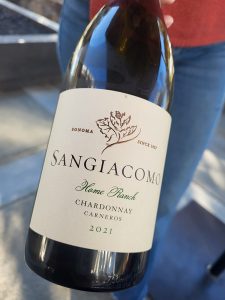
“I’m optimistic,” Steve said. “Consumers want authenticity. They want to know where their food comes from. We believe if you take care of the land, it will take care of you.”
Looking ahead, the Sangiacomos will continue to grow their vineyard brand and their own wine brand simultaneously. They plan to remain in farming and to successfully transition the next generation into the family business. And they want to continue learning even more about winegrapes and making wine. They’re eyeing their grandfather’s homeland, where grapes and wine have gone hand in hand for more than 4,000 years.
“It’s on our list to go back to Italy, not as a vacation, but like a business reconnaissance mission, to learn more about winegrape growing from them,” Mike said. “It’s long overdue.”







